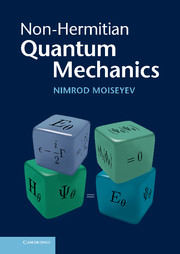Book contents
- Frontmatter
- Contents
- Preface
- 1 Different formulations of quantum mechanics
- 2 Resonance phenomena in nature
- 3 Resonances from Hermitian quantum-mechanical calculations
- 4 Resonances from non-Hermitian quantum mechanical calculations
- 5 Square integrable resonance wavefunctions
- 6 Bi-orthogonal product (c-product)
- 7 The properties of the non-Hermitian Hamiltonian
- 8 Non-Hermitian scattering theory
- 9 The self-orthogonality phenomenon
- 10 The point where QM branches into two formalisms
- Index
8 - Non-Hermitian scattering theory
Published online by Cambridge University Press: 03 May 2011
- Frontmatter
- Contents
- Preface
- 1 Different formulations of quantum mechanics
- 2 Resonance phenomena in nature
- 3 Resonances from Hermitian quantum-mechanical calculations
- 4 Resonances from non-Hermitian quantum mechanical calculations
- 5 Square integrable resonance wavefunctions
- 6 Bi-orthogonal product (c-product)
- 7 The properties of the non-Hermitian Hamiltonian
- 8 Non-Hermitian scattering theory
- 9 The self-orthogonality phenomenon
- 10 The point where QM branches into two formalisms
- Index
Summary
We begin by considering the following scattering experiment. A projectile, e.g., an atom A in a given electronic state, collides with a target which we will take as a diatomic molecule BC in its ground electronic, vibrational and rotational state. For a short period of time an activated complex [ABC]# is generated. As time passes the activated complex can break into different products. For instance, in our example these products will be A + BC, B + AC, C + AB and A + B + C. Each one of the possible products can be in different electronic, vibrational and rotational quantum states. The total energy which is originally the sum of the electronic and translational energies of the projectile A and the electronic, vibrational, rotational and translational energies of target BC is conserved during the scattering process.
Time-independent scattering theory enables one to calculate the probability of obtaining the specific products in given quantum states and the kinetic energy distribution of the products as a function of the total energy of the system without the need to solve the time-dependent Schrödinger equation. The time-independent formulation of scattering theory is based on the ability to propagate analytically an initial given wavepacket, Φ(0), to infinite times. That is, we need to get a closed form expression for limt→±∞ e−iĤt/ħ|Φ(t = 0)〉. To quote from the introduction of the excellent book on scattering theory written by Taylor: “The most important experimental technique in quantum physics is the scattering experiment. That this is so is clear from even the briefest review of modern physics”.
- Type
- Chapter
- Information
- Non-Hermitian Quantum Mechanics , pp. 250 - 322Publisher: Cambridge University PressPrint publication year: 2011
- 1
- Cited by



